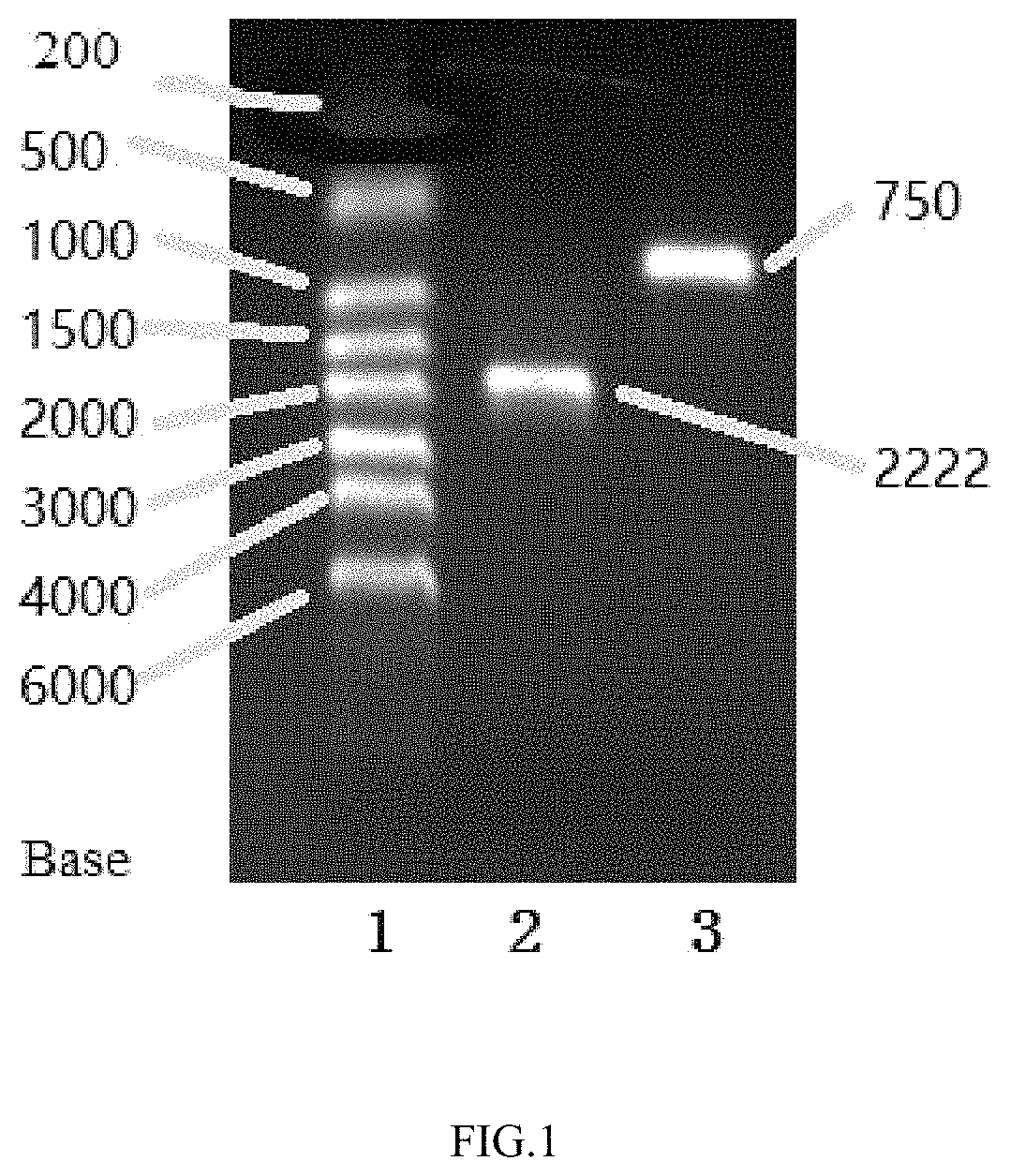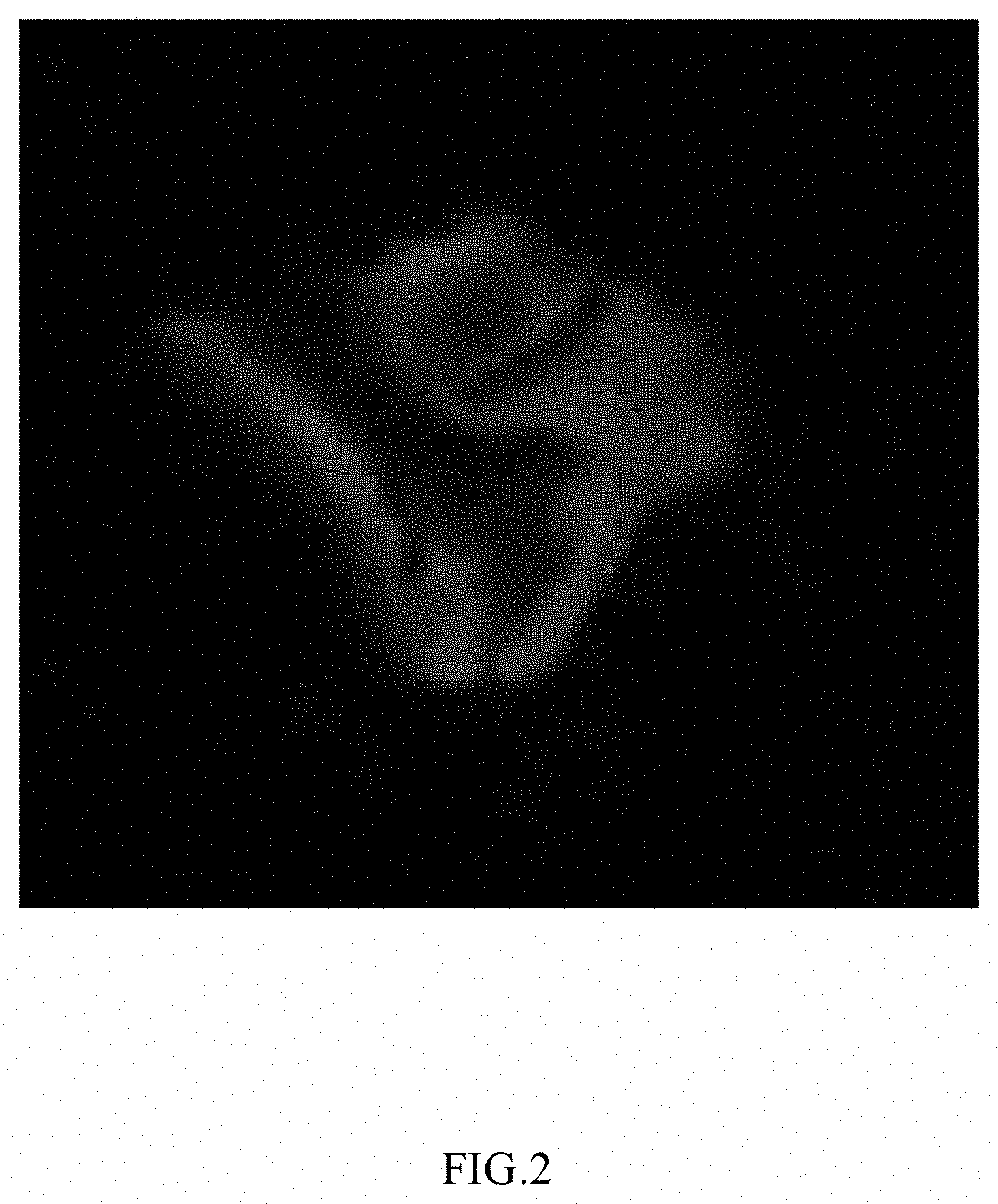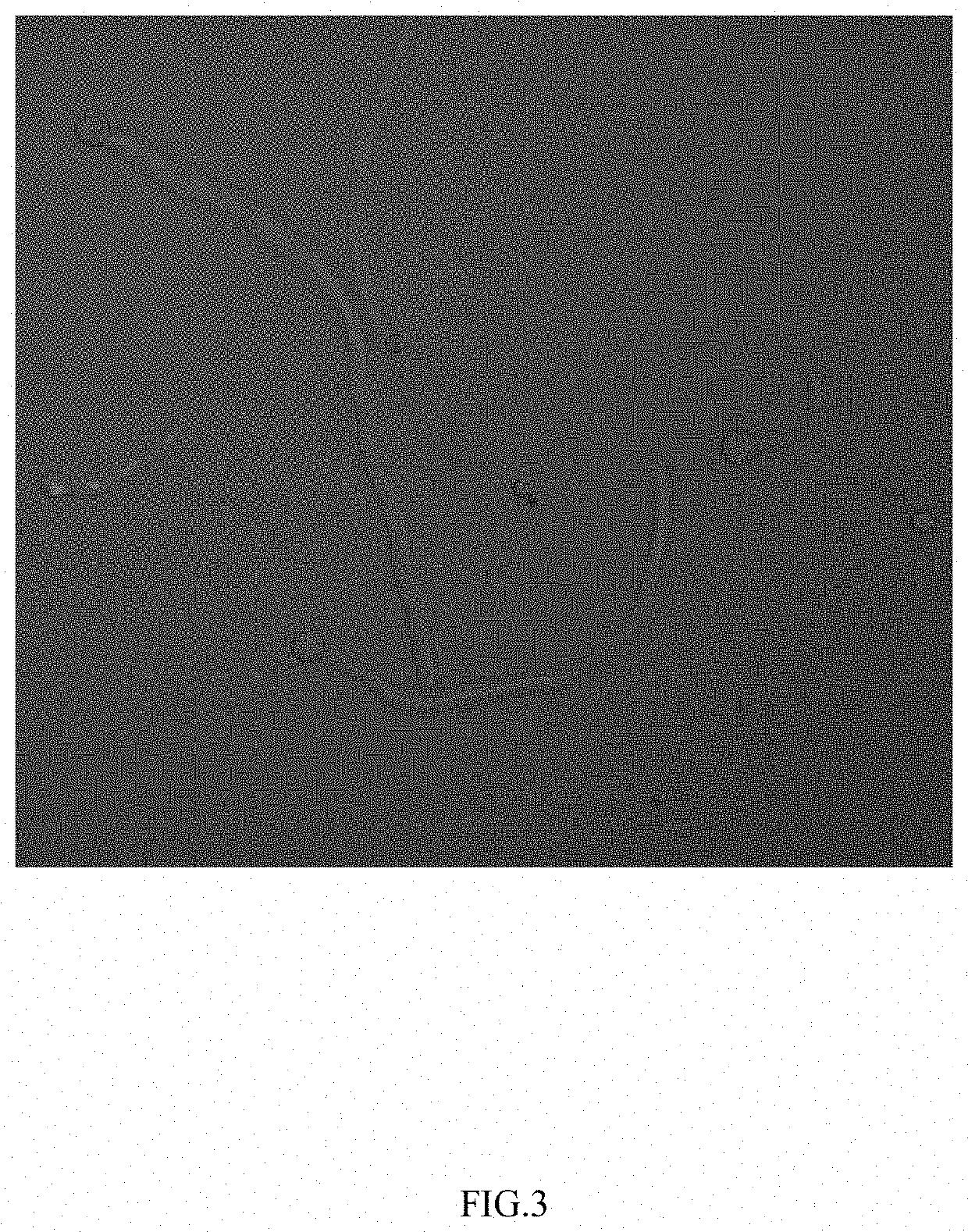Method to produce protein in Aspergillus niger's resting spores using SSRNA
a technology of aspergillus nigers and protein, applied in the field of biological technologies, can solve the problems of single-stranded molecule, short half-life, unstable rna, etc., and achieve the effect of avoiding killing cells, high uniformity, and intense electric field
- Summary
- Abstract
- Description
- Claims
- Application Information
AI Technical Summary
Benefits of technology
Problems solved by technology
Method used
Image
Examples
example 1
[0068]Expression of green fluorescent protein (GFP) in Aspergillus niger cells:
[0069]1. Construction of Plasmid for In Vitro Transcription
[0070]The GFP gene encoding sequence is shown in SEQ ID No. 5,
[0071]The GFP protein sequence is shown in SEQ ID No. 6,
[0072]PCR primers for amplification of GFP gene:
[0073]
[0074]Among them, the GCTAGC sequence in the primer F near the 5′ end is used to promote binding of eukaryotic translation initiation factor and RNA which transcribed from DNA in vitro, this sequence adjacent to the target gene's start codon ATG. After PCR with above primers, the GFP gene can be fused with GCTAGC in the upstream, and restriction enzyme cutting sites in the upstream and downstream.
[0075]PCR system (50 μl): GFP template 1 μL, primer F 2 μL, primer R 2 μL, 2×Taq PCR mix 25 μL, and ddH2O top up to 50 μL. PCR program: 94° C. for 2 min, 30 cycles of (94° C. for 30 s, 61.6° C. for 30 s, and 72° C. for 60 s), and 72° C. for 5 min.
[0076]After detection of the correct PC...
example 2
[0105]Expression of Red Fluorescent Protein (RFP) in Aspergillus niger Cells:
[0106]1. Construction of Plasmid for In Vitro Transcription
[0107]The RFP gene encoding sequence is shown in SEQ ID No. 7,
[0108]The RFP protein sequence is shown in SEQ ID No. 8,
[0109]PCR primers for amplification of RFP gene:
[0110]
RFP-F:5′ CGGAATTCGCCACCATGGCCTCCTCCGAGGACGT 3′,with EcoR I site.RFP-R:5′ TCGAGCTCGTTAGGCGCCGGTGGAGTGG 3′,with Sal I site.
[0111]In RFP-F, the GCCACC sequence near the 5′ end is used to promote binding of eukaryotic translation initiation factor and RNA which in vitro transcribed from DNA, this sequence adjacent to the target gene's start codon ATG.
[0112]RFP-R′ 5′ end contains Sal I site.
[0113]In accordance with example 1, the RFP gene is amplified by PCR, ligated to the PGEM-T easy plasmid, then in vitro transcription, and the resulting RNA will be transformed into the host spores.
[0114]2. Using the above-mentioned red fluorescent protein encoded RNA to express red fluorescent prot...
example 3
[0129]Expression of yellow fluorescent protein (YFP) in Aspergillus niger cells:
[0130]1. Construction of Plasmid for In Vitro Transcription
[0131]The YFP gene encoding sequence is shown in SEQ ID No. 9,
[0132]The YFP protein sequence is shown in SEQ ID No. 10,
[0133]In accordance with example 1, the YFP gene is amplified by PCR using the same primers as GFP, ligated to the PGEM-T easy plasmid, then in vitro transcription, and the resulting RNA will be transformed into the host spores.
[0134]2. Using the above-mentioned yellow fluorescent protein encoded RNA to express yellow fluorescent protein in Aspergillus niger dormant spores, the steps are as follows:
[0135]1) Culture of Aspergillus niger and Collection of Spores
[0136]In a 15-cm Petri dish, a solid agar medium (PDA medium) was prepared.
[0137]Aspergillus niger CBS 513.88 was inoculated onto the surface of the solid agar medium and cultured at a temperature of 40° C. with 60-85% humidity for 3 days, to allow Aspergillus niger spores t...
PUM
| Property | Measurement | Unit |
|---|---|---|
| voltage | aaaaa | aaaaa |
| humidity | aaaaa | aaaaa |
| temperature | aaaaa | aaaaa |
Abstract
Description
Claims
Application Information
 Login to View More
Login to View More - R&D
- Intellectual Property
- Life Sciences
- Materials
- Tech Scout
- Unparalleled Data Quality
- Higher Quality Content
- 60% Fewer Hallucinations
Browse by: Latest US Patents, China's latest patents, Technical Efficacy Thesaurus, Application Domain, Technology Topic, Popular Technical Reports.
© 2025 PatSnap. All rights reserved.Legal|Privacy policy|Modern Slavery Act Transparency Statement|Sitemap|About US| Contact US: help@patsnap.com



